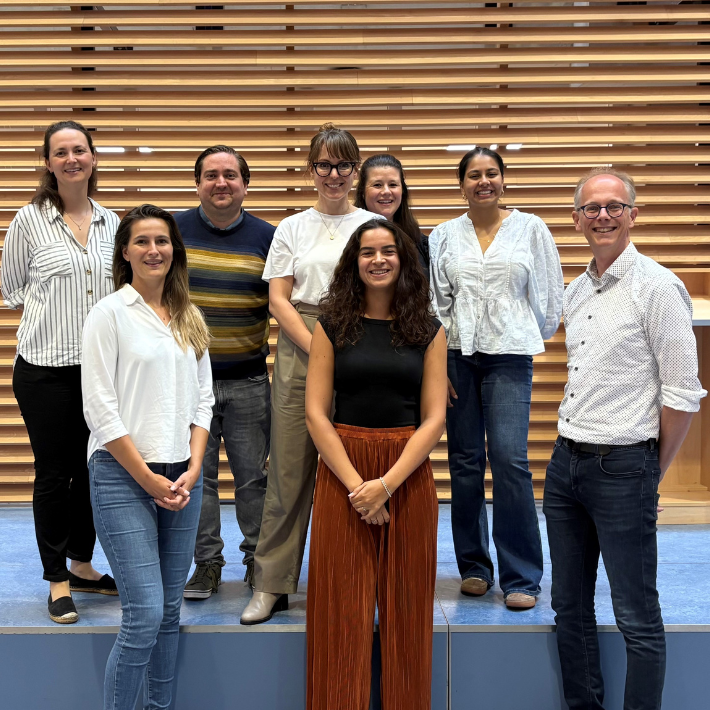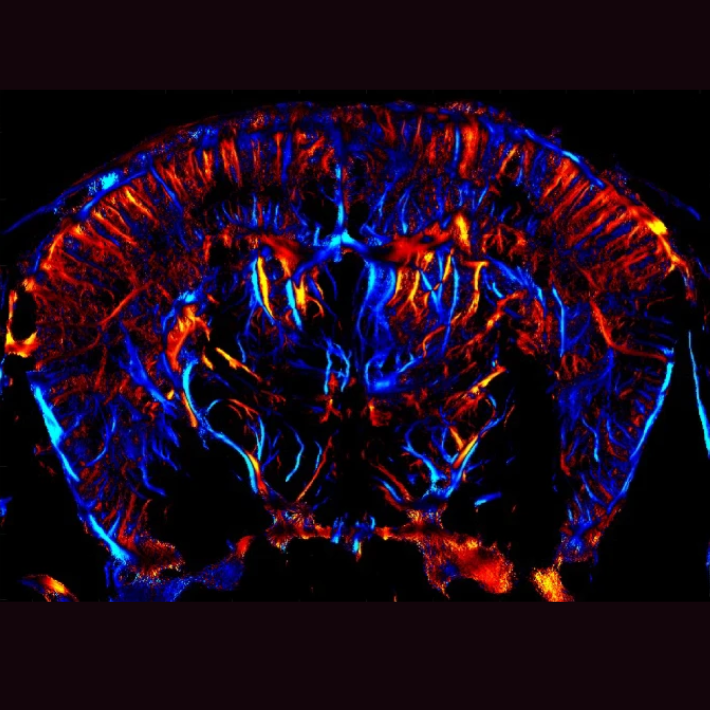First patient starts clinical drug trial for Dutch-type Cerebral Amyloid Angiopathy at the LUMC
Top row v.l.t.r.: Ellen Stijl – ’t Hart, Roald van Luxemburg, Ellis van Etten, Renate van Rijt, Yasmine Alladin Lower row v.l.t.r.: Sanne Schriemer, Lisa van Duin, Thijs van Osch.
&width=710&height=710)
Dutch-type Cerebral Amyloid Angiopathy (D-CAA), is a rare inherited condition in which a harmful protein fragment accumulates in the blood vessels of the brain. This can lead to cerebral hemorrhages, memory problems, and other symptoms. The cerebral hemorrhages often occur around the age of fifty. The disease mostly affects a few Dutch families, especially in and around Katwijk.
Unique and exciting
The current clinical drug trial is part of a larger international research project. "It is very unique that we have succeeded in including D-CAA patients in a drug study. Normally, the pharmaceutical industry would not be quick to conduct research into a rare disease," says researcher Ellen Stijl-'t Hart. After years of preparation, consultation, and approval from the medical ethics review committee, the clinical trial has now officially started.
For people with D-CAA, this is the first treatment ever to be tested. “So, it is really a big and exciting moment,” says Maike Hoek, board member of the D-CAA Association. “Not only for the patients, but also for their loved ones.”
Potentially also for non-inherited CAA and Alzheimer’s
In this drug study, scientists want to test whether the drug Mivelsiran can slow down the production of the harmful protein fragment called amyloid beta. Because this protein fragment is also involved in CAA (the non-hereditary form of D-CAA) and Alzheimer's disease, the research may contribute to future treatments for a much larger group of patients.
In an earlier phase of this research, the drug has already been found to be safe in people with early-stage Alzheimer's disease. Those results were the foundation for this follow-up study.
How does the drug trial work?
The drug trial will last approximately two years. Participants will receive several doses of the drug via a spinal injection. Researchers will use brain scans and other measurements to monitor whether the drug is effective and remains safe.
Because this is a clinical drug trial, not everyone will get the treatment. Half of the participants will receive a placebo, a replica of the real drug but without active ingredients. At the end of the study, all participants can choose to receive the drug in an extended phase of the study.
Who can join?
Only people who carry the gene for D-CAA can take part. The minimum age is thirty. Before joining, LUMC will do a screening to see if someone is suitable and if it fits their personal situation.
Collaboration with the patient association
The LUMC has collaborated closely with the D-CAA patient association for many years. This partnership is also important for this study. The association helps inform members, organizes meetings and contributes ideas about the implementation of the study.
Last May, an information afternoon was held at the LUMC where patients and their loved ones were informed about the study and had the opportunity to ask questions. The association's involvement ensures that the study is well aligned with the wishes and concerns of the target group.
Hope for the future
Even though this is a big step in research on D-CAA, it is not yet certain if Mivelsiran will work. That will become clear in the coming years. Maike Hoek: “The CaPPricorn study is a huge milestone: for the first time, a medicine is being tested for D-CAA. This gives our community hope that there may be ways to slow down or treat this disease in the future.”
The LUMC is a center of expertise for D-CAA and is as such involved in the execution of this study. For researchers, this study is also an opportunity to learn more about other brain diseases where amyloid beta plays a role. Neurologist Ellis van Etten: “It is special to reach this milestone together with people with D-CAA and their families. Their involvement and trust make this research possible.”

&width=710&height=710)
&width=710&height=710)